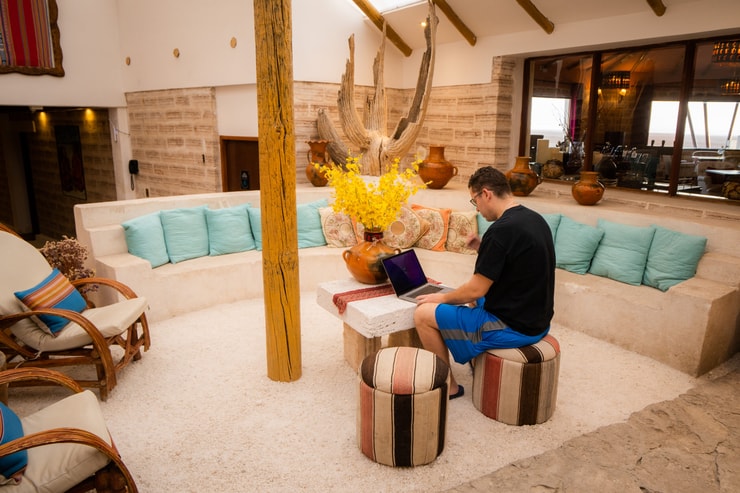The stock market is many things to the different types of traders that trade on it…
If you’re new to trading, this might be the most important article you ever read,
If your goal is to be a killer trader, you must understand the different stock sectors and why they matter. It’s important and you need to know it.
So let’s do this. Here’s a breakdown of what the stock market is, how it works, a list of the 11 different stock market sectors, and some tips on how to use them to your advantage.
Table of Contents
- 1 What Is the Stock Market?
- 2 How the Stock Market Works
- 3 What Are the Functions of a Stock Market?
- 4 How Stock Markets Are Regulated
- 5 What Is the Significance of the Stock Market?
- 6 What’s a Stock Sector?
- 7 The 11 Different Stock Sectors
- 8 How These Stock Market Sectors Performed in 2023
- 9 How to Access Different Stock Sectors
- 10 Key Different Stock Sectors in the European, Asian, and Canadian Stock Markets
- 11 Importance of Diversifying Your Investments
- 12 What Are the Best Stocks in Each Sector to Trade Now?
- 13 Best Stock Sector to Invest in During Inflation
- 14 How to Invest in the Stock Market
- 15 How to Buy and Sell Stocks
- 16 The Bottom Line
What Is the Stock Market?

2025 Millionaire Media, LLCThe stock market, sometimes referred to as an exchange, is a complex system where shares of publicly traded companies are issued, bought, and sold. It’s a key component of the modern economy, and it’s where Wall Street conducts its business, though there are other exchanges around the world. The stock market provides an opportunity for growth as individuals invest their capital in the hopes of generating returns.
Understanding the Stock Market
In simple terms, the stock market operates on a system of supply and demand. Investors purchase shares of a company, which represent a small piece of ownership in that company. Companies use the stock market to raise capital, which they can invest in their business. The market’s function as a marketplace of buyers and sellers facilitates this.
How the Stock Market Works
Buyers and sellers trade securities on the stock market. The exchange acts as an intermediary, making the trade process more efficient. Traditionally, this was conducted on physical trading floors, but with technology advancement, most trades are now digital. Brokers play a significant role, as most individuals use brokerages to conduct trades.
What Are the Functions of a Stock Market?
The primary functions of a stock market include capital raising for businesses, providing liquidity for traders, and facilitating growth for investors. Additionally, the stock market can be used for speculation, where traders buy and sell based on price fluctuations rather than intrinsic value.
How Stock Markets Are Regulated
Stock markets operate under specific regulations designed to protect investors and maintain fair markets. These regulations cover everything from who can trade, what types of securities can be traded, to how trades are reported.
What Is the Significance of the Stock Market?
The stock market’s significance goes beyond providing investment opportunities for individuals. It’s a critical economic engine, helping companies raise capital for expansion, job creation, and fostering innovation. Moreover, it’s a leading economic indicator, often reflecting the economic health of a country.
What’s a Stock Sector?

2025 Millionaire Media, LLCThere are thousands of companies in the stock market.
Each stock is in a sector. So each stock you invest in fits into a specified sector. The sectors generally track the overall sectors of the economy. (If the word “sector” doesn’t appeal to you, you can just think of them as categories.)
According to the Global Industry Classification Standard, there are 11 different stock sectors. These are sometimes referred to as GICS sectors.
Each sector represents a distinct segment of the economy, with unique characteristics and performance metrics. Understanding these sectors can provide valuable insights into market trends and potential investment opportunities. For a more comprehensive exploration of the stock market sectors, check out this detailed guide.
Understanding the sectors and why they’re important for stock trading can give you an edge in the market. So let’s look at all the stock market sectors now …
The 11 Different Stock Sectors

2025 Millionaire Media, LLCHere’s a look at each sector, along with some of the largest and best known companies in each.
Energy
The energy sector contains oil, gas, coal, and fuel companies, as well as energy equipment and services companies — the ones that build oil-drilling equipment or provide services to oil companies.
Your major players in this sector are Exxon, Shell, Chevron, BP, Kinder Morgan, Schlumberger, and Halliburton. These companies typically generate billions of dollars in profit every quarter and can pay generous dividends.
This sector moves in correlation with the price of crude oil. If crude oil’s falling, you can bet that the companies in this sector are falling as well. However, these companies’ stock prices are usually stable, and their generous dividends can make them a good long-term hold, if you’re into that kind of thing. They may also be a good choice if you’re looking to get defensive in a rough market.
More Breaking News
- Why Rocket Lab Stock Might Rally?
- Recursion Pharmaceuticals Faces Financial Headwinds Amid Strategic Changes
- MARA Stock Realignment: Buying Opportunity?
Basic Materials
The basic materials sector stocks are chemical, construction materials, packaging, metals, and paper.
Materials companies usually operate in the business-to-business space, meaning they sell their products to other companies. They provide the key supplies that go into the products that you and I purchase.
These companies are at the beginning of the supply chain. They make the steel for cars, the wood for homes, the plastics for packaging, etc.
DowDuPont, Ecolab, Valvoline, Scotts Miracle-Gro, and Sherwin-Williams are all in the materials sector.
Industrials

2025 Millionaire Media, LLCNext up is the industrials sector. The defense, machinery, aerospace, airlines, construction, and manufacturing companies are in here.
A lot of large-cap companies are in this sector. Boeing, 3M, Honeywell, UPS, Delta, Lockheed Martin, Deere, and Caterpillar — they’re all industrials.
Much like the oil companies, the industrials generate lots of cash flow and have stable dividends. If defense budgets around the world are increasing, you can bet that more cash will be flowing to the defense companies in this sector.
Consumer Discretionary
The fourth sector on our list is consumer discretionary. You and I spend a lot of our money with these companies. It’s where our discretionary income goes. It’s the retailers, apparel companies, restaurants, car companies, hotels, media, and household products companies.
You’ve heard of the companies in this sector. It’s where Amazon, Home Depot, Ford, Wynn, Starbucks, Target, and Chipotle are. We shop, eat, and travel with these companies.
When consumer confidence is high and people are spending their money like no end, these companies are making bank and they’ll probably have strong quarterly earnings.
Consumer Staples

2025 Millionaire Media, LLCConsumer staples are the food, beverage, and tobacco companies. They’re also manufacturers of household goods and personal products. The category also includes supermarkets.
You’ve likely heard of many of the companies in this sector because they sell products to you. They include Walmart, Coca-Cola, Procter & Gamble, Costco, Kraft Heinz, Estée Lauder, and many more.
The consumer staples sector is considered a defensive sector because it’s generally resilient in the event of an economic downturn.
Unlike consumer discretionary companies, consumer staples companies make products that people buy on a regular basis. They also include supermarkets like Walmart. Discretionary products are products that people don’t need to purchase.
People don’t need to buy new cars, clothes, or eat at restaurants. But they need to buy food and household goods — and they’ll likely buy those things from supermarkets.
Healthcare
Pharmaceuticals, healthcare equipment, and healthcare services companies are in the healthcare sector. Johnson & Johnson, Pfizer, Merck, Medtronic, and UnitedHealth are some of the bigger companies.
Many view companies in the healthcare sector as good and safer plays because people will always need medical care.
Financial
The financial sector consists of banks, insurance companies, and real estate companies.
This sector is closely tied with interest rates. If interest rates rise, big banks make a lot more money. That’s because banks give out loans and mortgages, and the higher interest rates all go to the banks.
JPMorgan, Bank of America, Wells Fargo, U.S. Bancorp, Goldman Sachs, and many regional banks are in this sector.
Information Technology

2025 Millionaire Media, LLCCommonly referred to as the “tech sector,” companies in this sector include internet, software, and semiconductor companies. Also included are companies that manufacture electronic equipment, data processing, communication equipment, and IT services.
Microsoft, Intel, Visa, MasterCard, Adobe, Salesforce, and Square are some of the largest companies in the tech sector.
The tech sector’s been one of the leading sectors the last few years.
Communications
This sector is communication services companies. You know them as Verizon, AT&T, T-Mobile, Sprint, Comcast, Charter, Netflix, Facebook, and Google.
Most of the companies in this sector rely heavily on recurring revenue, while some others earn the bulk of their revenue from advertising revenue (think Facebook and Google).
Utilities
These companies are your electric, gas, and water utilities. They have little to no competition in the areas where they operate, and local governments regulate most of their prices.
Since these companies operate regionally (i.e., there isn’t one national electric or water provider in the U.S.) you’d likely only recognize your local utility. Some of those utilities are Duke Energy, NextEra, PG&E, Xcel, and NRG.
These are considered defensive sectors because people will always need what these companies sell. They’re subject to heavy government regulation, but they’re often safer bets in a shaky market.
Real Estate
This last one is pretty self-explanatory. It’s real estate companies called REITs (real estate investment trusts) and real estate developers.
They operate apartments, malls, offices, and senior living communities. If you have a relative in a nursing home, chances are the company operating that community is publicly traded in the real estate sector.
Companies in this sector earn their revenue from rent income and rising property values. And since they pay out at least 90% of their taxable profit as dividends to shareholders, some investors take long-term holds in these stocks and expect dividend checks every three months.
One prominent company in this sector is Simon Property Group, which operates malls. AvalonBay Communities and Aimco are some of the larger apartment operators.
How These Stock Market Sectors Performed in 2023
The market has regained most of its 2022 losses — led by the brand-new AI hot sector.
The Nasdaq and tech stocks led the recovery. This was well-needed after the banking crisis that started off the year and rocked the financial sector.
Other sectors have also been picking up. Consumer discretionary stocks have been hot, led by cruises. Biotech stocks are hot as always.
Short squeeze supernovas are back on the market’s radar. Carvana Co. (NYSE: CVNA) has been on a tear, squeezing up 700% through mid-July.
How to Access Different Stock Sectors

2025 Millionaire Media, LLCTo access and trade the different stock market sectors, you need to have a brokerage account.
You can trade each individual sector by trading an exchange-traded fund (ETF).
Think of ETFs as a group of stocks all placed into one fund. And you can buy that fund. ETFs are less volatile, which can make them great for beginner traders who can be scared off by rapid (and sometimes extreme) price movements.
There’s a group of ETFs called the SPDR, managed by State Street Global Advisors. The SPDR ETFs are very popular, and in the SPDR group, there’s an ETF for each sector.
Here’s a list of each sector and the corresponding SPDR ETF:
- Energy — XLE
- Basic Materials — XLB
- Industrials — XLI
- Consumer Discretionary — XLY
- Consumer Staples — XLP
- Healthcare — XLV
- Financial — XLF
- Information Technology — XLK
- Communications — XTL
- Utilities — XLU
- Real Estate — XLRE
You can use your brokerage to invest in and trade these ETFs. Since an outside company manages them, they have fees in the form of an expense ratio. This charges shareholders a percentage (usually less than 1%) of the fund’s total assets. That money goes toward administrative, management, advertising, and other expenses.
You can also invest and trade individual stocks that are in a sector. For example: If you bought stock in Ford, you’re buying a stock in the consumer discretionary segment.
Key Different Stock Sectors in the European, Asian, and Canadian Stock Markets

2025 Millionaire Media, LLCThe European, Asian, and Canadian stock markets have the same sectors as the U.S. stock market. This similarity gives investors the opportunity to compare stock market sectors across countries.
Importance of Diversifying Your Investments
You know the saying, don’t put all your eggs in one basket?
That’s especially relevant to the stock market.
Why? Because stocks in the same sector tend to move together. So if some energy stocks are down, chances are others will be as well. That’s why you need to diversify your investments, make sure you’re spread into different sectors, AND increase your exposure to some more defensive sectors.
This is precisely why understanding stock sectors is so important!
Investing in the stock market isn’t just about picking individual stocks. It’s about understanding the broader economic landscape and how different sectors interact with each other. By understanding the dynamics of investment sectors, traders can make more informed decisions and potentially increase their chances of success. To gain a deeper understanding of the importance of investment sectors in trading, read this article.
To help you understand why tracking different stock sectors performance is important, let me give you an example.
Let’s say last year you decided to invest in five stocks and hold them for the duration of 2022. And for all five stocks you chose EV stocks because you hypothesized that they would have a good year.
As you can see, that strategy would turn out very poorly. EV stocks were one of the worst-performing sectors in 2022. If you had instead picked stocks in separate sectors (diversifying your investments) you would have fared better.
You could’ve invested in real estate, tech, financials and consumer goods in addition to your EV stocks. This would be a more balanced portfolio with exposure to different areas of the market.
See? Don’t put all your eggs in one basket!
If you want to start building a better foundation for approaching the markets, sign up for my 30-Day Bootcamp. You go from basics to patterns and beyond in just 30 days.
What Are the Best Stocks in Each Sector to Trade Now?

2025 Millionaire Media, LLCI don’t care which stock market sector’s performance is the best from an investor’s standpoint. I look for penny stocks in hot sectors. If a sector has no volume or volatility then I’m not interested. I focus on big percent gainers. If it’s in a hot sector, that’s even better.
Here are some sector-specific watchlists:
Prepare Yourself to Invest in Different Stock Sectors
Before you dive in and start picking your favorite stock market sectors, you need to gain an understanding of each sector.
Start with a bird’s-eye view … look at the yearly performance of each sector, and then narrow to the monthly performance, and then daily performance. Major news sources report the daily S&P performance of different stock sectors, so you can keep on top of the trends.
Keep an eye on how the sector has performed over the last year.
Granted, past performance doesn’t predict future results … but remember, the trend is your friend. If the trend is down, you probably don’t want to be buying and hoping it turns around. In the stock market, hope won’t get you very far.
If you’re looking to day trade or swing trade, monthly or daily performance overviews will be useful. Find the sectors that are performing well today, and then look at some of the strongest stocks in that sector. Pull up the charts and do some technical and fundamental analysis.
Keep in mind that just because a sector is having a strong day, that doesn’t guarantee it will last any longer than that day.
For example, if the price of crude oil rises, a stock like ExxonMobil (NYSE: XOM) will likely rise as well. But crude is subject to a lot of catalysts, which means that it can reverse direction quickly, and Exxon’s stock can too.
Just like any good trader, be sure to time your entries and exits well and cut losses quickly.
Best Stock Sector to Invest in During Inflation

2025 Millionaire Media, LLCInflation can impact various sectors differently, but traditionally, commodities have been a go-to sector during inflationary periods. This is due to their intrinsic value, which can hold up even when the currency’s value is decreasing.
Trading Challenge
Most traders fail. That’s because they enter trades without any plan.
They buy a stock because they like the company or because their friend told them to buy it. Then once they’re in the trade, their only plan is to hope the price goes up. Remember what I said earlier? I’ll say it again: Hope is not a strategy.
When it comes to trading, hope straight-up sucks. You will fail with this “plan,” and all the hopes and dreams you had of becoming the next millionaire day trader will soon be gone — along with your money.
My Trading Challenge is a community of students looking to become better traders and live the laptop lifestyle. Several of my students have experienced huge success and many others are well on their way.
Apply today for your shot at potentially becoming my next success story. You’ll get access to my alerts, webinars, a massive vault of video lessons and archived webinars, and more.
We’re a community, so you’ll be able to learn from other traders as well — it’s the ultimate way to communicate with other traders, get tips, share your plays, and learn from others’ successes and failures.
How to Invest in the Stock Market
Investing in the stock market usually starts with opening a brokerage account, followed by conducting research to determine the best investment opportunities. Consider your risk tolerance, savings, and financial goals when deciding on your investment strategy.
Investing in the stock market involves more than just buying and selling shares. It requires a deep understanding of different types of stocks and how they function.
Add to your knowledge account by checking out this article on types of stocks. It’s a great starting point for anyone looking to deepen their understanding of the stock market.
How to Buy and Sell Stocks

2025 Millionaire Media, LLCBuying and selling stocks is primarily done through brokers or via online trading platforms. When you’ve identified a company you’d like to invest in, you place an order through your broker. Once the trade is executed, the shares will be in your account. Selling shares works in a similar way, except you’re reducing the number of shares you own.
The Bottom Line
Stock sectors might not be the most exciting facet of your trading education, but you need to know about them if you want to be a part of this world.
If you plan to put your hard-earned money into a stock, you’d better know how its sector has performed. Coming in blind without any knowledge of the way it operates can be a recipe for disaster. And that’s why sectors matter.
Here’s a better strategy:
- Start by getting yourself familiar with how the different stock sectors performed over the last year.
- Then begin your trading day by checking to see how the different stock sectors are performing for the day.
- Understand why they’re moving in their current direction.
- Then start hunting for some stocks you’d like to go long or short on.
Got it? Good. Doing this can get you off to a better start as a trader because you’ll know which stocks have momentum behind them and which have some headwinds.
Do you have a favorite sector you trade? Let me know in the comments … I love to hear from you!











Leave a reply